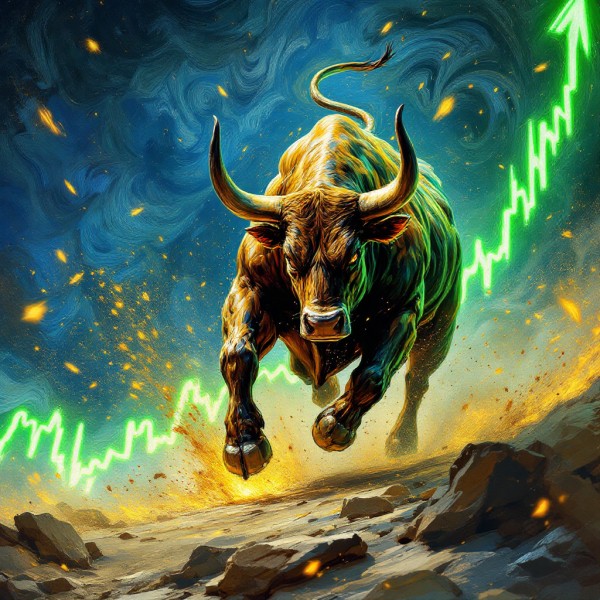Developing High-Frequency Trading Systems: Like Bringing a Knife to a Server Farm
Updated Aug 21, 2025
Where the Curve Breaks
Speed doesn’t just kill in high-frequency trading—it bends perception. Not the clock, but the mental map investors use to navigate information, risk, and each other. Building HFT systems isn’t only a race for faster hardware; it’s a software arms contest and a form of psychological warfare against latency, where the human urge to make sense of things becomes a liability.
This isn’t a tidy debate about ethics or regulation—those are straight-edge frameworks for a market that now behaves on curved surfaces. Think warped terrain rather than gridlines: topological markets where you don’t travel from A to B so much as fall through folds in the data, and where one trader’s alpha appears as another’s phantom limb.
Fear Loops in the Millisecond Mind
HFT should be an emotionless zone, yet fear gets compiled into the code. The architecture itself encodes an obsession with not being last—last to see, last to act, last to fill. The doctrine isn’t truth, it’s first. The game is to front‑run time.
That mindset breeds feedback loops—less sweaty-palmed fear than systemic paranoia. Strategies are tuned, re‑tuned, then scrapped, not because they failed, but because someone might be six nanoseconds ahead. Conviction doesn’t erode; it flips.
These aren’t beliefs moving on a straight timeline. They churn like eddies in a curved field of attention. Picture a torus, not a track. Momentum here isn’t directional; it’s entropic, dissipating as the crowd chases the same micro‑edge.
Where Models Fail Before They’re Born
Start with the priors. Most HFT engines are Bayesian at heart—conditional probabilities stacked into Monte Carlo towers. But the base assumptions are fragile: that liquidity is steady, that quotes are faithful, that more speed buys certainty. In this domain, the data is warped, quotes flicker like mirages, liquidity is conditional, and time itself deforms under stress.
Bayesian updating falters when the data‑generating process turns adversarial. HFT doesn’t operate on neutral ground; it’s a field of distorted priors where every signal is also a decoy. Trying to “update” in that space is like walking a straight line on a Möbius strip—you arrive back where you started, only inverted.
The deeper indictment is this: high‑frequency environments reveal that we rarely revise our beliefs; we shield them. Instead of rebuilding models, we bury contradictions under velocity, mistaking more speed for more truth.
Spikes, Spirals, and Narrative Misfires
HFT doesn’t care about fundamentals. It lives in the interstitial—microsecond gaps, bid-ask misalignments, correlation bursts. But here’s the twist: the crowd still projects meaning onto these glitches. A volume spike in Tesla? Must be news. A sudden drop in S&P futures? Panic. But in many cases, it’s just noise amplified through recursive interaction loops.
This is where the narrative spiral comes in. One trader reacts to a twitch in price. Another responds to that reaction. The reflexivity stacks until a meaningless move becomes a meaningful myth. Like a black hole pulling in starlight, the spiral reshapes reality around it. HFT is the gravity. The crowd is the curvature.
And the original signal? Long gone. What survives is belief—the kind that’s impervious to disproof because it feels like motion. In a warped market space, movement is mistaken for meaning.
The Inversion of Skill
Traditional trading rewards pattern recognition. HFT punishes it. Any repeatable signal gets arbitraged out in milliseconds. Ironically, the only persistent edge is the ability to abandon belief quickly. This isn’t skill—it’s detachment weaponised.
Humans can’t operate like this. Not naturally. So developers build systems to do it for them. But those systems—crafted by emotional beings—carry ghost code. Subtle biases leak into the parameters. Skew preference. Lag aversion. The desire to be right, even in silence.
Every HFT system is haunted by its creator. Not with intent, but with architecture. The system reflects not just the market, but the worldview of the team that coded it.
The Crowded Edge: When Everyone’s Early, No One Is
Latency used to be a moat. Now it’s a swamp. Everyone’s fast. So the edge moves—into co-location arms races, exotic order types, or market-making dark pools. But the psychological structure is the same: preemption over understanding. The trader who understands the market second is already dead.
But what happens when everyone gets the signal early? It inverts. The trade becomes crowded before it even triggers. Like a path that collapses under the weight of footsteps no one took. This isn’t front-running—it’s pre-failing.
Crowd behavior in HFT isn’t a mass herd—it’s a hypersensitive grid of micro-decisions. Each participant mimics not just action but intent, fractalizing the same flawed premise across thousands of machines. It’s not about copying what worked. It’s about out-anticipating what others will anticipate you will anticipate.
That’s not forecasting. That’s narrative cannibalism.
Flat Earths and Folded Markets
The belief that HFT “adds liquidity” or “improves efficiency” is an artefact of flat-earth thinking. In the real market, folded, recursive, adversarial liquidity becomes a weapon. It’s there until it’s not. It’s offered until it disappears like a hologram with teeth.
Participants chase mirages. They optimise toward latency arbitrage until the environment is so distorted that price becomes a byproduct, not a goal. In this frame, markets no longer discover price—they produce it as an artefact of speed war.
And belief in this system? It persists because it’s functional. Not truthful. We update our models not because they’re better, but because they work just enough to stay funded.
That’s the new rationality. Ugly, effective, detached.
Ghost Liquidity and the Theatre of the Bid
In HFT, bids aren’t intentions. They’re bait. Liquidity is no longer supply and demand — it’s choreography. Orders flash on-screen, vanish before contact, then reappear in new form. It’s a liquidity theatre with no actors behind the curtain, just reflex loops optimising for signal distortion.
The naïve trader believes the order book is a window into the market. But in the high-speed world, it’s a funhouse mirror. What appears to be depth is actually a latency-staggered illusion. The crowd still acts on it, though, because belief in market structure is not optional. It’s infrastructural. Most traders must behave as if the book is real, because the entire market relies on a shared illusion.
This shared belief — maintained across thousands of dissonant strategies — is the glue. Not true. Not data. Just a collectively stabilised projection.
Error Cascades and the False Confidence of Volume
Most HFT systems are reactive, not predictive. But the illusion of foresight is easy to generate when you’re fast enough to front-run everyone else. Volume looks like validation. Movement looks like trend. In reality, these are just error cascades.
One misread signal gets interpreted, reinterpreted, then amplified. The initial misfire becomes the new normal. It’s not manipulation — it’s accidental orchestration. The crowd revalidates itself using synthetic echoes.
This isn’t “efficient markets.” It’s the psychological equivalent of a neural misfire repeating in a loop because the network is too plastic to resist the signal. These aren’t markets clearing — they’re glitching.
And everyone trades the glitch.
When Speed Breeds Stasis
The paradox of speed is that it doesn’t create dynamism — it creates stasis. Not stillness, but repetition. Fast systems can’t afford novelty. They optimise toward predictability. Even though the price may change 10,000 times a second, the underlying logic remains the same.
This creates a high-entropy plateau — a market that looks volatile on the surface but is frozen in behavioural patterns beneath. Most HFT systems aren’t creative. They’re replicative. They hunt for micro-arbitrage across the same corridors, the same correlations, the same failed assumptions.
In a world this fast, true novelty becomes arbitrage-resistant. The moment you spot it, it’s already dead.
Bayesian Collapse in an Adversarial Frame
Here’s where traditional statistical inference breaks apart. In benign environments, Bayesian updating is clean: observe, revise, repeat. However, in adversarial contexts, observations are often corrupted. You’re not learning from the environment — you’re being gamed by it.
An HFT system infers information from data curated by competitors. The quotes, the spreads, the volumes — they aren’t “nature.” They’re adversarial camouflage. So every belief update carries embedded deception. Even clean data is suspect. Because by the time you process it, you’re already the mark.
The solution isn’t to update faster. It’s to question the assumption that updating helps at all. Sometimes, stability isn’t the absence of motion. It’s a refusal to dance to the wrong beat.
Reflexivity Reloaded: When Feedback Replaces Reality
In the long arc of market evolution, HFT represents a shift from interpretive trading to reactive trading. From narrative to noise. But the psychological signature doesn’t disappear — it just mutates. Traders still need to believe. So they believe in the structure itself.
Feedback replaces fundamentals. Movement becomes its own justification. Algorithms no longer need to explain why something happened — they only need to detect that it did. If everyone’s reacting to the same echo, belief becomes tautological: “It moved because it moved.”
That’s not market analysis. That’s recursive theatre.
And yet… it works.
Because in the absence of ground truth, the map becomes the terrain.
The Edge of the Invisible
The most profitable high-frequency trading (HFT) strategies are often the least visible not just to outsiders, but to the markets they influence. Stealth is alpha. If you’re seen, you’re dead. So the ecosystem selects for opacity.
That means the market you’re watching — the one on your screen — is a shadow. The real market lies beneath the surface, invisible, unmeasurable, and evolving at speeds that no human can comprehend. And yet human behavior still reacts to the shadow, still assigns meaning to its movements, still constructs narratives around its patterns.
We are, collectively, trading on silhouettes.
And in this inverted world, edge no longer comes from analysis. It comes from non-presence. The best traders aren’t the smartest or the fastest. They’re the most invisible.
Topology of Belief: Investing on a Warped Surface
Zooming out, what does all this mean?
It means we’re not on a rational plane. We’re on a warped manifold of belief — a surface shaped by attention, fear, latency, and reflexivity. Price paths don’t follow straight lines; they curve through psychological fields.
You can’t apply flat logic to this. “Buy low, sell high” assumes an up and down that don’t exist. The terrain folds back on itself. The lows are traps. The highs are artefacts. The crowd is walking a Klein bottle — always inside, always outside, always misoriented.
HFT didn’t create this topology. But it exposed it. Accelerated it. Hardened its shape.
The old investor’s timeline — research, thesis, entry, exit — is broken here. You don’t move from premise to outcome. You loop. You oscillate. You co-create the terrain as you traverse it.
Developing Systems for a Market That Rejects Systems
So what does it mean to “develop high-frequency trading systems” in a market like this?
It means building tools that act faster than thought, on terrain that mocks cognition. It means engineering detachment into the machine, not just from emotion, but from expectation. From hope. From intention. It means shedding the human impulse to make sense of patterns, and instead learning to surf the curvature of collective misinterpretation.
True innovation here isn’t speed or strategy. It’s philosophical. It’s designing systems that don’t just act without belief — they thrive because belief is broken.
You’re not trying to win a fair game. You’re learning to profit in an epistemological collapse.
You’re not forecasting a path. You’re mapping a topology.
You’re not investing in a timeline. You’re navigating a twisted shape of thought.
And if you’re still trying to bring old models, old metrics, old instincts into this realm?
You’re bringing a knife to a server farm.













